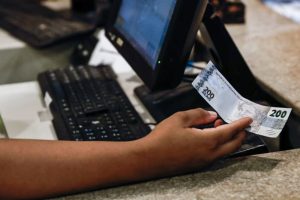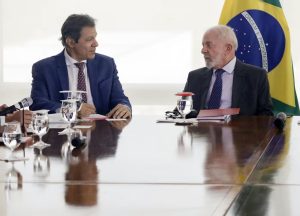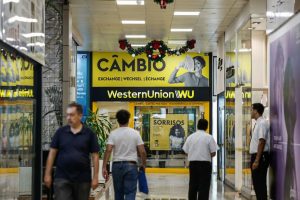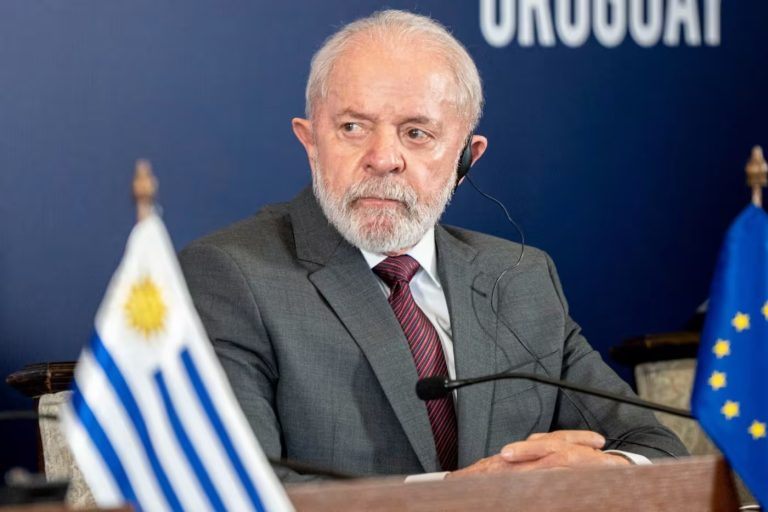Currency Tailspin Forces Brazil’s Leader to Do the Unthinkable: Cut Spending
Brazil’s currency plunges to lowest level in 30 years after breakneck spending on pensions and social services
The Wall Street Journal
‘Samantha Pearson
For months, Brazilian leaders have thrown almost everything they have in an effort to stop the country’s currency from a precipitous yearlong plunge. But nothing had worked, including hiking its benchmark rate above 12%.
Now, as the Brazilian currency, the real, slipped in recent days to its lowest level against the dollar since its introduction in 1994, lawmakers rushed to do something that’s anathema to leftist President Luiz Inácio Lula da Silva: cut government spending.
Da Silva and his leftist allies in Congress have spent lavishly on pensions and social benefits since he defeated the far-right firebrand Jair Bolsonaro in the 2022 election. But worries over Brazil’s soaring deficit have torpedoed the currency of Latin America’s biggest economy, just as this country of more than 200 million faces the prospect of a trade battle with President-elect Donald Trump that could weaken the real further.
For the leftist leaders who rule most of Latin America’s biggest countries, Trump’s incoming administration already promises significant political challenges.
His government will pressure drug-producing countries—among them Mexico and Colombia—to slow the exportation of fentanyl, methamphetamine and cocaine. Trump has pledged to slow illegal migration, which courses from South America to the Mexico border.

And he’s outlined how the U.S. will freely use tariffs to achieve trade and other goals. From Mexico to Brazil, economies are bracing for higher taxes on their exports to the U.S. The exception may be Argentina, where President Javier Mileihas built close ties to both the incoming president and tech mogul Elon Musk, Milei has expressed hope Trump would support his free-market overhaul and even initiate trade talks.
While Trump has yet to outline details of how he will deal with Latin America, his presence is already being felt in the currency markets.
Comments by Jerome Powell, Chair of the U.S. Federal Reserve, this week on inflation risks under the incoming administration strengthened the dollar, adding to the weakness of Brazil’s currency. The Brazilian real has lost about 20% against the greenback this year despite a series of massive dollar auctions by the Central Bank to reverse the trend.
“Most of the Brazilian economic challenges are domestic,” said Alberto Ramos, an economist at Goldman Sachs. But a stronger U.S. dollar and fewer rate cuts ahead by the Fed “require even more policy discipline by the Brazilian authorities,” he said.
Brazil’s Senate on Friday approved the remainder of the government’s long-awaited fiscal package that wasn’t approved the night before. The goal is to cut annual spending by some $11.6 billion to calm fears over the country’s widening deficit.
 The fiscal package caps minimum wage increases to which pension spending is linked, restricts benefits for the elderly and disabled, limits lawmakers’ ability to allocate public funds, and reduces a series of tax benefits.
The fiscal package caps minimum wage increases to which pension spending is linked, restricts benefits for the elderly and disabled, limits lawmakers’ ability to allocate public funds, and reduces a series of tax benefits.
Investors say it still may not be enough.
Da Silva has been under growing pressure as the country’s budget deficit—long the Achilles’ heel of Latin America’s biggest economy—has crept closer to 10%. The deficit reached 9.52% of GDP in October, up from 4.6% in January last year, according to the latest central bank data.
The government was already facing a race against the clock to approve the proposed cuts in Congress when da Silva was rushed to the hospital for an emergency brain surgery this month, causing further delays.
Investors have long had concerns over da Silva’s commitment to fiscal responsibility. First running the country between 2003 through 2010, he favored state-generated growth.
As China poured money into Brazilian commodities in the 2000s, da Silva funnelled cash into handouts for the poor and subsidized loans. Brazil’s economy grew 7.5% in 2010, leading academics to publish books with titles such as “Brazil is the New America.”
But the global scenario facing da Silva now is very different.
China, the country’s biggest trading partner, grew 0.9% in the third quarter, about the same growth rate Brazil logged. Higher global interest rates also mean it is harder to lure yield-seeking investors to the country even as Brazil has one of the world’s highest interest rates at 12.25%.
Trump’s election has only added to concerns, economists say.
The prospect of U.S. trade war with China and a stronger dollar has also left investors and policymakers anticipating the knock-on effects of Trump’s America First platform in a Latin America whose leaders expect tough talks with the U.S. over trade, immigration, drug trafficking and other issues.
“The problem facing the region is…it’s not really clear what to expect with Trump because Trump himself is unpredictable,” said Francisco Rodriguez, a Venezuelan economist at the University of Denver.
 Trump has threatened to level 25% tariffs on Mexican exports to the U.S. if the leftist administration of President Claudia Sheinbaum doesn’t do more to curtail the northbound flow of migrants and drugs. Colombian government officials have said they are racing to secure credits from the U.S. and multilateral institutions as soon as possible for their renewable energy plans, as they believe accessing loans may be harder to get under Trump.
Trump has threatened to level 25% tariffs on Mexican exports to the U.S. if the leftist administration of President Claudia Sheinbaum doesn’t do more to curtail the northbound flow of migrants and drugs. Colombian government officials have said they are racing to secure credits from the U.S. and multilateral institutions as soon as possible for their renewable energy plans, as they believe accessing loans may be harder to get under Trump.
Trump’s nomination of Latin America policy hawks like Sen. Marco Rubio (R.-Fla.) to lead the U.S. State Department has also raised the specter of tougher oil sanctions against Venezuela’s authoritarian regime.
J.P. Morgan estimates that the Brazil and Mexico economic growth will taper off in 2025 The region as a whole is still expected to expand by 2.2% next year, compared with 1.8% in 2024, buoyed by a turnaround in Argentina under Milei, whose deregulation and budget cuts have helped tame runaway inflation. Stocks on the MSCI Argentina Index more than doubled in value this year compared with the rest of emerging markets, which rose about 8%.
For da Silva, Trump’s election was the last thing his government needed.
Da Silva’s fiercest rival, Bolsonaro, the former president, is a close foreign ally of Trump and others in his camp.
Bolsonaro told The Wall Street Journal last month that he expected Trump to help him overturn a court ruling preventing him from running against da Silva in Brazil’s 2026 presidential election, possibly by pressuring the leftist government with trade tariffs.
Da Silva has also been locked in a bitter dispute with Musk, who will have a central role in the incoming Trump administration, after Brazil’s Supreme Court shut down Musk’s X social-media platform in Brazil for more than a month earlier this year.
Trump singled out Brazil’s high import taxes on U.S. goods in his first post-election press conference this week.
“If they wanna charge us that’s fine, but we’re gonna charge them the same thing,” Trump said about Brazil.
A stronger dollar under Trump could also raise the cost of imported goods, adding to inflation in Brazil, which is currently running at almost 5% and above the country’s 3% target. Higher borrowing rates will make it even more expensive for the government to service its own debt, potentially widening the deficit, economists say.
The hope, however, is that Brazil’s high interest rates will soon start working in the country’s favor, attracting investors who borrow cheaply abroad, buy fixed income assets in Brazil and pocket the difference.
If enough people invest in the so-called carry trade, then demand for Brazil’s currency rises and it strengthens again, said André Perfeito, chief economist at the São Paulo-based APCE consultancy. “That’s the theory anyway.”
Paulo Trevisani and Ryan Dubé contributed to this article.
WSJ


